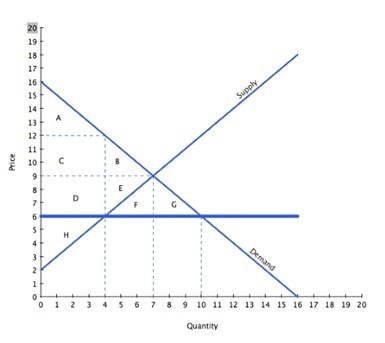Refer to Scenario 13.2 below to answer the question(s) that follow. SCENARIO 13.2: The government of Stratospheria is currently inviting investors to bid for the exclusive right to provide cable television service to its residents. The market demand for this service is P=55-0.01Q, where Q is the number of households that would subscribe to the cable service and P is the monthly fee charged to the subscribers. The associated marginal revenue curve is MR=55-0.02Q. Fun Cable Company is interested in bidding for the right to provide cable service in Stratospheria. It has a constant average and marginal cost of $5 for providing cable service to each household.Refer to Scenario 13.2. If Fun Cable Company were to be awarded the exclusive right to provide cable service in Stratospheria,
what price would it charge per household per month?
A. $5.00
B. $27.50
C. $30.00
D. $55.00
Answer: C
You might also like to view...
In the above figure, the short-run aggregate supply curve is SAS and the aggregate demand curve is AD. A recessionary gap exists
A) if the long-run aggregate supply curve is LAS1. B) if the long-run aggregate supply curve is LAS2. C) if the long-run aggregate supply curve is LAS3. D) All of the above answers are correct.
Selling a product at a price below its cost is known as dumping
Indicate whether the statement is true or false
Classical economists believe that
a. velocity varies directly with the money supply b. changes in the money supply affect real GDP c. the quantity of money explains prices d. the money supply affects velocity e. there are three motives involved in the demand for money
 With reference to the graph above, if the intended aim of the price ceiling set at $6 was a net increase in the well-being of consumers, then normative analysis would conclude that:
With reference to the graph above, if the intended aim of the price ceiling set at $6 was a net increase in the well-being of consumers, then normative analysis would conclude that:
A. the policy was effective, since surplus lost by producers through lower prices is less than the surplus gained by consumers through lower prices. B. there is no "right" conclusion to be reached (in a normative sense), since people have different opinions concerning what constitutes a better outcome. C. the policy was ineffective, since surplus gained by consumers through lower prices is less than the surplus they lost through deadweight loss. D. the policy was effective, since surplus gained by consumers through lower prices is less than the surplus they lost through deadweight loss.